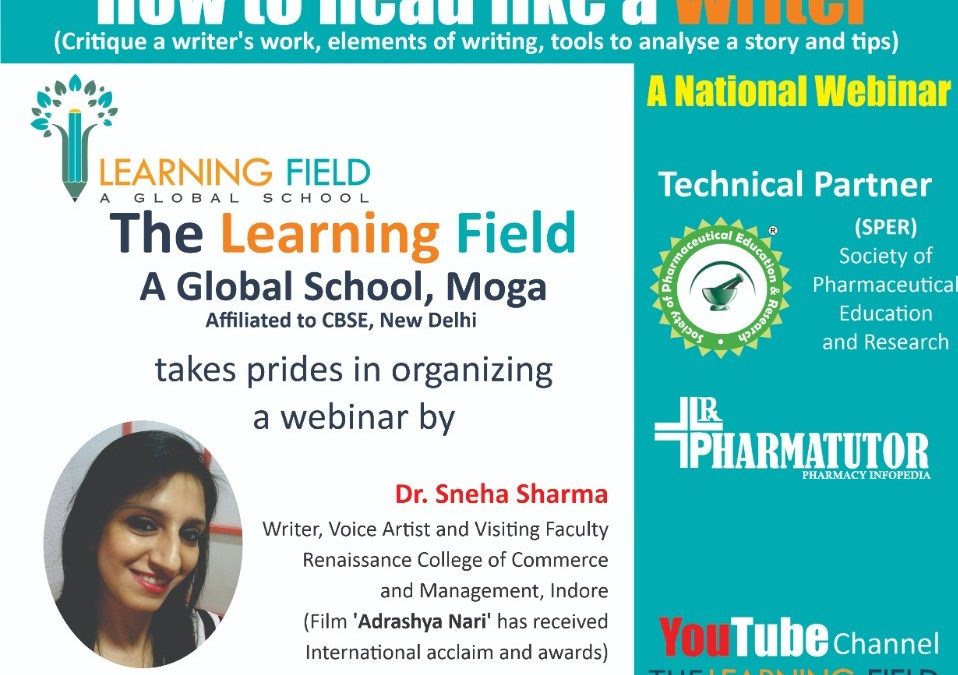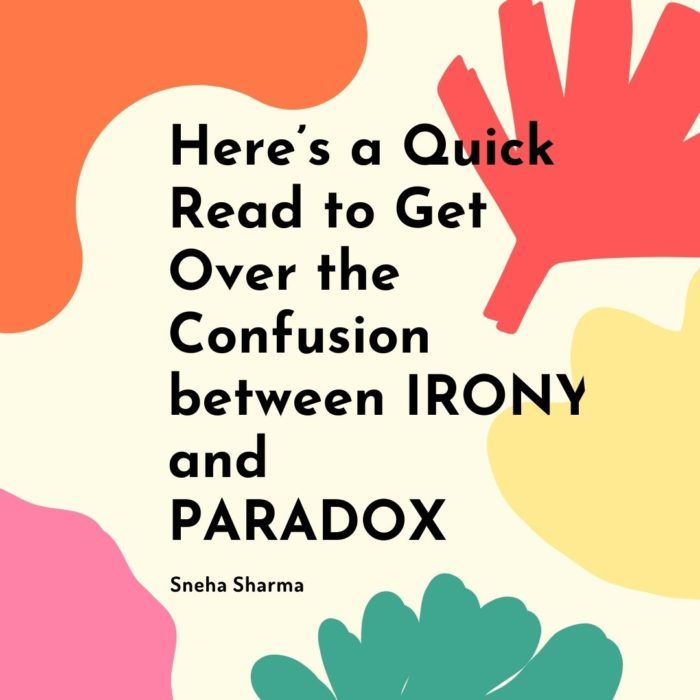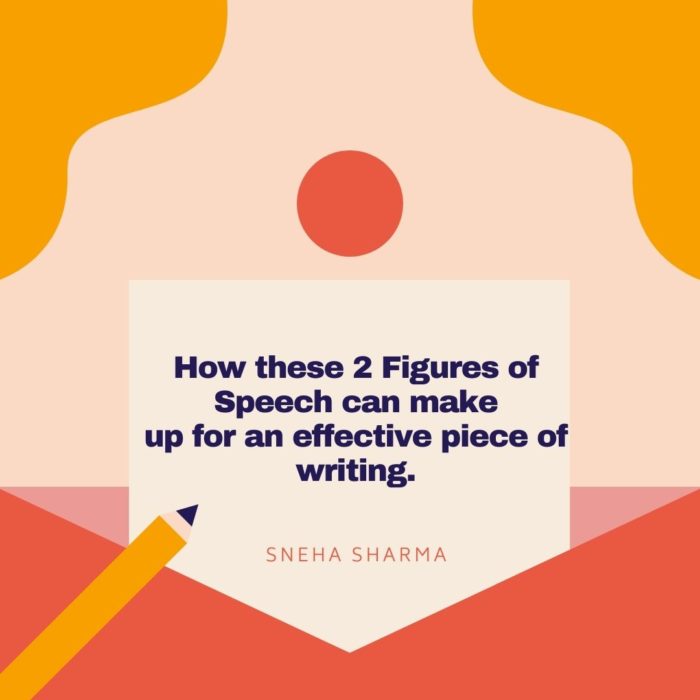by Sneha Sharma | May 7, 2022 | Creative Writing Tips
Voice in writing
Having a clearly defined literary voice can have a timeless appeal. In a piece of fiction, voice can mean –
- Author’s voice,
- Character’s voice and
- Narrator’s voice.
The Narrator’s voice –
The narrator is the ‘all-seeing eye’ of a story. In a case where there can be no specific attribute or name given to the narrator (Hills like White Elephants by Earnest Hemmingway), it can still have that omniscient point-of-view or POV, which can access characters’ feelings and thoughts and knows where the story is taking the reader. The narrator’s voice is the voice of the character or personality narrating the story. This voice can be different from the author’s voice, unless the author is narrating the story herself, like in case of personal essays, where she would consciously try to reveal her style of writing to the reader and would like to adopt an honest, natural tone to stay as close to her own personality as possible. While doing this, she would also understand how this style of writing relates to her audience.
So, narrator’s voice is the voice of the person telling the story. Just like in a Radio drama, we are able to tell the character’s voice from the narrator’s voice, while reading fiction, we can discern the same. We can tell one voice from the other. The narrator will have his own set of diction, mood and style of telling the story and can take a particular POV (Point of View.), different from the Author’s.
Character’s voice –
A story can have multiple character voices. A character’s voice tells us about their personality, disposition (characteristic attitude) and background. In a story every character has their own way of expression. He may sound casual or cautious, terse or verbose, traits revealed by the way they use words and react in a dialogue or scene.
The precise elements that may be studied to understand a character’s voice are their –
- Tone
- Diction
- Dialect
- Level of introversion or extroversion
These elements may also reveal their age, nationality or life experiences.
For example, in E.B. White’s Charollete’s Web, Charollete, the female spider is like an old teacher with a caring and selfless demeanor when she speaks to Wilbur, the pig. She speaks with clarity and there’s an inspirational slant in her language.
“These autumn days will shorten and grow cold. The leaves will shake loose from the trees and fall. Christmas will come, then the snows of winter. You will live to enjoy the beauty of the frozen world, for you mean a great deal to Zuckerman and he will not harm you, ever. Winter will pass, the days will lengthen, the ice will melt in the pasture pond. The song sparrow will return and sing, the frogs will awake, the warm wind will blow again. All these sights and sounds and smells will be yours to enjoy, Wilbur — this lovely world, these precious days…”
- Charollete, from Charollete’s Web.
Wilbur, on the other hand is diffident and low in self-esteem.
“But Charlotte,” said Wilbur, “I’m not terrific.” – Wilbur (when Charollete decides to spin the word ‘Terrific’ through her web, for the him.)
Author’s Voice
The author’s voice is her personality coming through on the page. It includes everything from her tone (attitude towards a problem), her word choice or diction, punctuation and sentence structure. Her thoughts, part of her voice, are also conveyed through the voices of her characters and their background like age, nationality etc.
An example of voice could be the long, crafty sentences of Dickens or, cut to the chase sentences (without much use of adverbs) of Hemmingway.
An author’s voice is also determined by –
- Mood
- Or worldview
- Point of View
Voice of the following authors transcends their individual work –
- Earnest Hemmingway
- Toni Morrison
- James Joyce
- Joyce Oates
- Margret Atwood
- Nathaniel Hawthorne
Meaning of the worldview –
Every author has a picture they paint of the world. There’s a certain way they think about the world according to their own values, experiences and learnings. A worldview or perspective, is what an author thinks about worldly topics like – love, family, terrorism etc. and this can be narrated through the characters in fiction and through first or second person point of view in case of Non-fiction.
For example, if I am standing facing the façade of a large building and if I were to tell somebody how the building looks, I would give the description of the facade. It’s like seeing something from one angle and only talking about that angle in detail. Like talking from a young man’s perspective, the story might take us into different action-oriented scenes, making us feel that life is really adventurous, and from an old man’s perspective it might be more observational and analytical.

by Sneha Sharma | Jan 15, 2021 | Creative Writing Tips
Does the method of reading change, if we are a writer? Well, the answer is, it needs to, if we haven’t yet discovered the technique of RLW (Reading Like a Writer).
The first thing I try to teach in my writing workshops, to every new batch is the base point from where the journey of writing begins – and it has to be, by all means, the way we read!
My research and articles elaborating and analyzing this point, published in UGC approved journals and internal university periodicals, have put me in a position to elaborate on the main points of the techniques of reading.
Mike Bunn in one of his chapters in Writing Spaces: Readings on Writing (Volume 2), explains the importance of RLW. He uses Allan Tate’s metaphor of writing, when one thinks of herself as an architect, understating like a student, the constructs of ‘building’ a story, so that one can build it for herself.
A writer is “a reader moved to emulation.”
In a Paris Review interview, when asked if his earlier work has been inspired by Virginia Woolf, author William Maxwell (Author of ‘So Long, See You Tomorrow’ and ‘They came Like Swallows’) agreed that his earlier work indeed was a compendium of all of his favorite authors. He quoted another legend Saul Bellow as saying,
“A writer is a reader who is moved to emulation.”
(To strive to equal or excel, especially through imitation. Eventually we find our voice as we keep on writing. )
Robert Peake in his article – Emulation, Originality, and the Writing Tradition, elaborates on how emulation–as defined by a desire to imitate and transcend the spirit and tactical successes of works one admires–can actually enhance originality.
Talking of emulation, I also like Robert’s idea of reading widely and responding genuinely to our rich heritage of literary arts. Maybe reading a thousand authors and then narrowing the reading down to a select few who are your favorites and exercising through imitation of their style of writing till the time we find our own independent voice as writers.
Emulation teaches you to creatively rewrite and re-examine the mechanics of what was written
Emulation can be thought for thought (rewriting the thought conveyed in a passage in your own words)or it can be a word for word (replacing the adjectives and nouns, for example, with other synonymous adjectives and nouns)
Many times, reading too much of the same author can automatically lead to writing like him.
Read Slow –
Understanding the usage of a language as a medium and its sentence structure is the key to become an eloquent writer. That would happen when we read slow to grasp the power and CHOICE of words used in popular literature.
Language is to a writer what notes is to a musician and color to a painter. The wonder of every piece of art is its intricacies, what went into it.
“Every page was once a blank page just as every word that appears on it now was not always there, but instead reflects the final result of countless large and small deliberations. All the elements of good writing, depend on the writer’s skill in choosing one word instead of another. And what grabs and keeps our interest has everything to do with those choices. It’s surprising how easily we lose sight of the fact that words are the raw material out of which literature is crafted.” – Francine Prose – Fifty Shades of Grey.
My absolute favourite suggestion –
Reread your old favorites –
When you read a book for the first time, you are busy comprehending the story, grasping the language, journeying the symbolism, making notes but after you become familiar with these constructs and like what you read, it is a good idea to re-experience it. It’s like going back to your summer house in vacations time and again, to relive the comfort of the place you enjoy so much being into.
Consider asking yourself – what is that one or two things about the book that made me come back to it?
- What makes the book special?
- Who was my favorite character?
- Is there anything to learn about the character arcs or kind of metaphorical references made for him/her?
For a passage you admire, you can choose to ask yourself –
- What was the word choice of the author?
- What was the rhythm?
- Is the passage offering any new perspective that is changing what the story has meant to me until now?
- Ruthanne Reid, author for ‘The Write Practice’ suggests – elaborating on the paragraph that you think is the game-changer of the story; something that made your perspective change about the character’s choices or emphasizes on the gravity of the problem or importance of the solution offered or why the character’s assumptions are such, maybe because she belongs to a different culture or locality. Talk about it.
Elaborate on these points in a notebook or a blog. Share with others or have a discussion group.
Also reading the same genre in which you are willing to write would help to evaluate which archetypes to avoid. Although reading across the genre helps boost creativity.
Helpful links –
Saul Bellow was a Canadian-American writer. For his literary work, Bellow was awarded the Pulitzer Prize, the Nobel Prize for Literature.
*1 – Ruthanne Reid writes in the blog ‘The Write Practice’ – ‘There is a rhythm to good prose writing. Read a beautiful passage out loud if you don’t believe me. If you were to swap words with synonyms of different syllable count, the rhythm would totally change.’

by Sneha Sharma | Sep 3, 2020 | Creative Writing Tips
Irony is when something is just the opposite of what is expected and is not an arrangement of two opposing words (Read oxymoron)
Difference between paradox and oxymoron –
Paradox is a statement of contradiction that can be true. While oxymoron is just a pairing of two opposite words to enhance reader experience.
Example of a paradox – ‘Standing is more tiring than walking.’ Although people usually consider walking as more tiring but this statement when applied in real life can prove to be true.
Difference between Paradox and Irony –
Both irony and paradox involve contrast or contradiction.
Irony is when there’s a difference in –
- Expression and literal or apparent and intended meaning of the words (verbal irony)
- Expectation and reality (situational irony)
- difference in knowledge of audience and characters. (dramatic irony)
Paradox is where there’s contradiction in –
The statement itself or when the statement is counterintuitive.
For example, drinking a lot of water can make you thirsty. This statement is irresolvable and can be true. It is counter-intuitive and self-contradictory.
Also, ‘Less is more.’ This statement is self-contradictory but it is true that when people have less, they value it more!
Examples –
Irony due to Difference in expression of words and their literal meaning – (when apparent and intended meanings are different) –
The Unauthorized Autobiography (By Lemony Snicket)
“Today was a very cold and bitter day, as cold and bitter as a cup of hot chocolate; if the cup of hot chocolate had vinegar added to it and were placed in a refrigerator for several hours.”
In the first line the analogy seems awkward. It seems contradictory to the established facts – a cup of hot chocolate cannot be cold and bitter. But Snicket goes on to put it in perspective and we realise it was a humorous and ironical way (for which he is famous) of describing the day.
In the poem, The Rime of the Ancient Mariner, written by Samuel Coleridge, Coleridge wrote:
“Water, water, everywhere,
And all the boards did shrink;
Water, water, everywhere,
Nor any drop to drink.”
This is an example of situational irony giving the piece a dramatic effect.
Irony is also present when one of the stakeholders in the occurrence of an event possesses more knowledge about it than the other. It is required to dig deeper on the part of the reader to get the intended message as a witness.
For example, when there’s a difference in the knowledge of audience and that of the character in a story (the character doesn’t know about the murder, the audience does), there’s a DRAMATIC irony.
Paradox involves irresolvable contradiction in a sentence.
Oscar Wilde is considered to be the master of paradoxes. His famous paradoxical usage goes – “I can resist everything except temptation”. When you can resist everything except temptation, you cannot really resist anything! That’s quite a paradox.
When I say – “I always lie.” Is this a paradox, irony or oxymoron?
Find the answer Here – Liar’s Paradox ..:)

by Sneha Sharma | Aug 30, 2020 | Creative Writing Tips
Creative writing is much like performing an act on stage. You’re making things up. The difference lies in the fact that in the former all you have is words weaved on a contrasting backdrop. You create a world of illusion for your reader through a tapestry of words, making an appeal to their five senses of touch, taste, smell, sight and hearing.
While the process of creative writing, is not defined; it varies from writer to writer, there are a few techniques to give your writings a boost in terms of reader engagement.
(more…)



